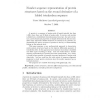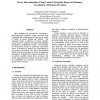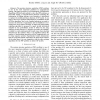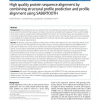14 search results - page 1 / 3 » Number sequence representation of protein structures based o... |
CORR
2006
Springer
13 years 4 months ago
2006
Springer
A protein is a sequence of amino-acids of length typically less than 1, 000, where there are 20 kinds of amino-acids. In nature, each protein is folded into a well-defined three-d...
BIBE
2005
IEEE
13 years 6 months ago
2005
IEEE
The classification of proteins based on their structure can play an important role in the deduction or discovery of protein function. However, the relatively low number of solved...
ISVD
2007
IEEE
13 years 11 months ago
2007
IEEE
Three strategies are presented for developing a knowledge-based statistical contact potential from computationally hydrated proteins that may be useful in studies of protein foldi...
CEC
2009
IEEE
13 years 9 months ago
2009
IEEE
— The protein structure prediction (PSP) problem is one of the most important problems in computational biology. This paper proposes a novel Estimation of Distribution Algorithms...
BMCBI
2010
13 years 5 months ago
2010
Background: Protein alignments are an essential tool for many bioinformatics analyses. While sequence alignments are accurate for proteins of high sequence similarity, they become...




